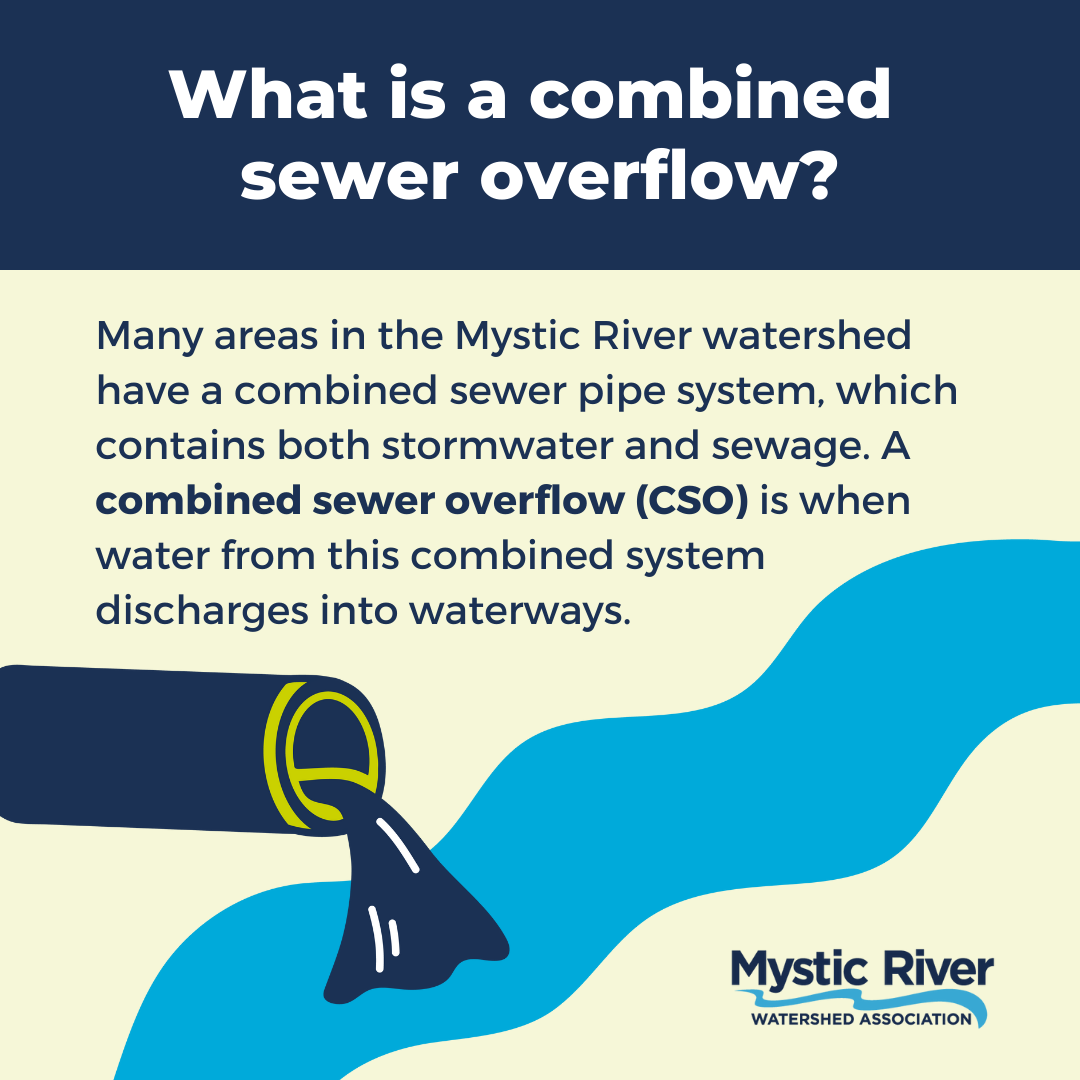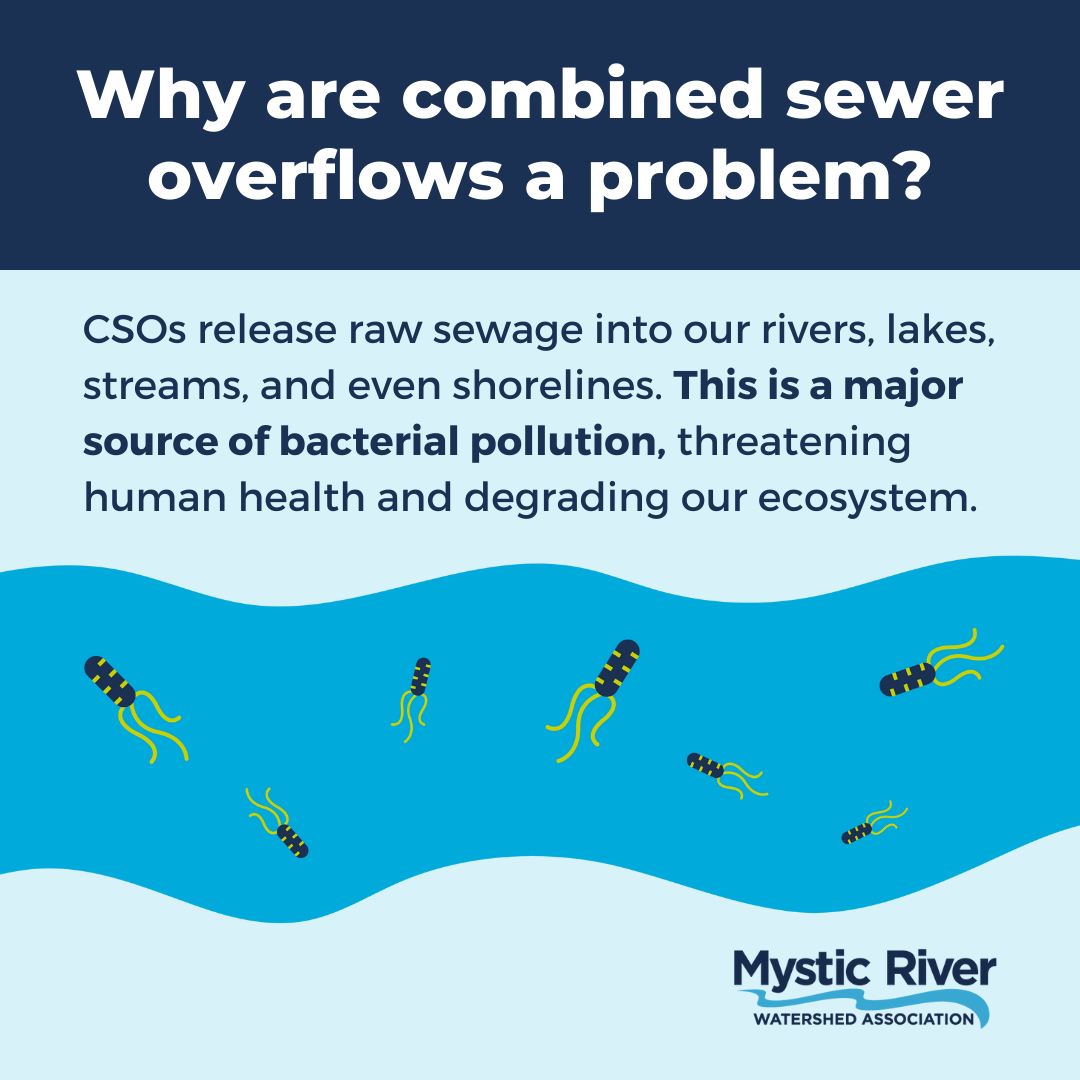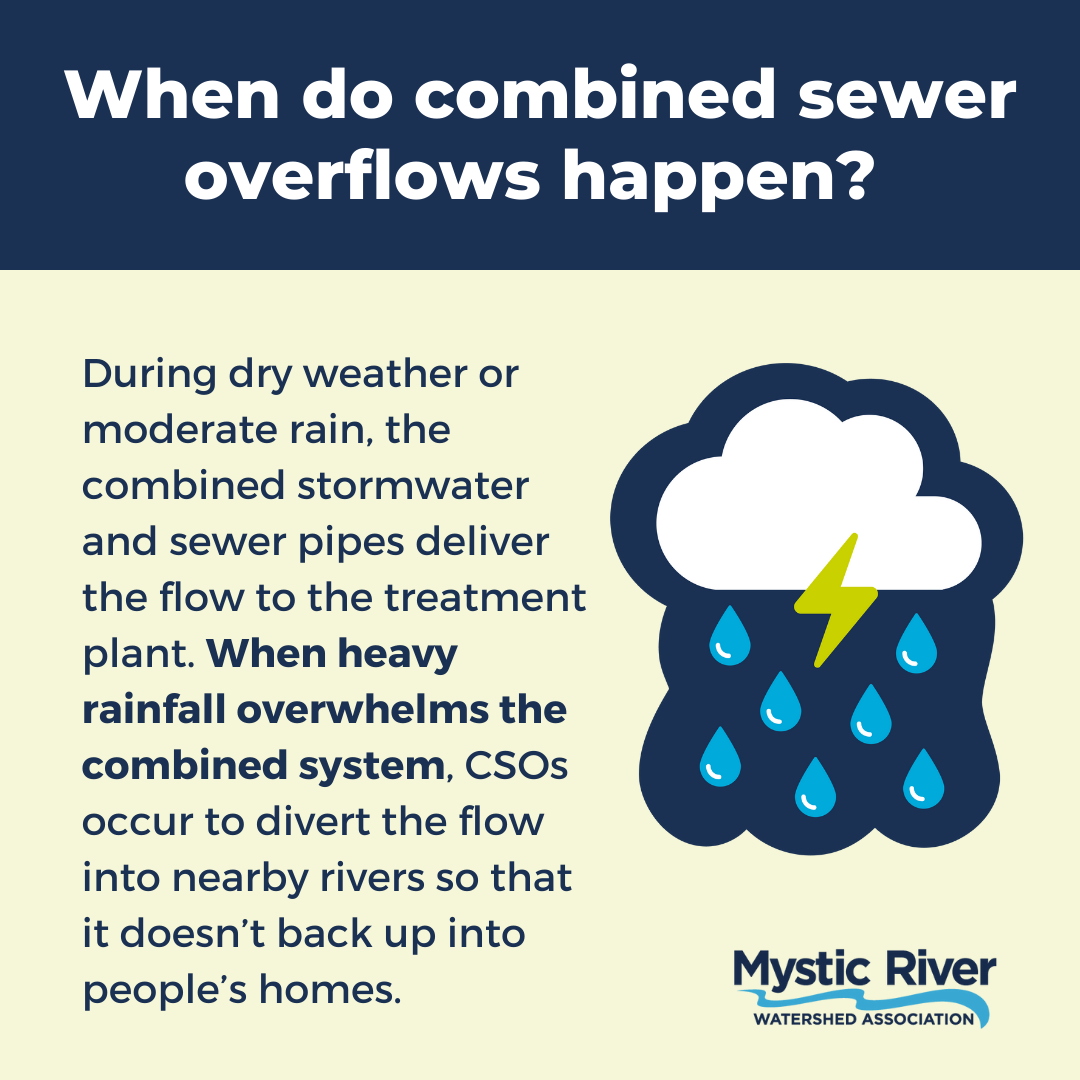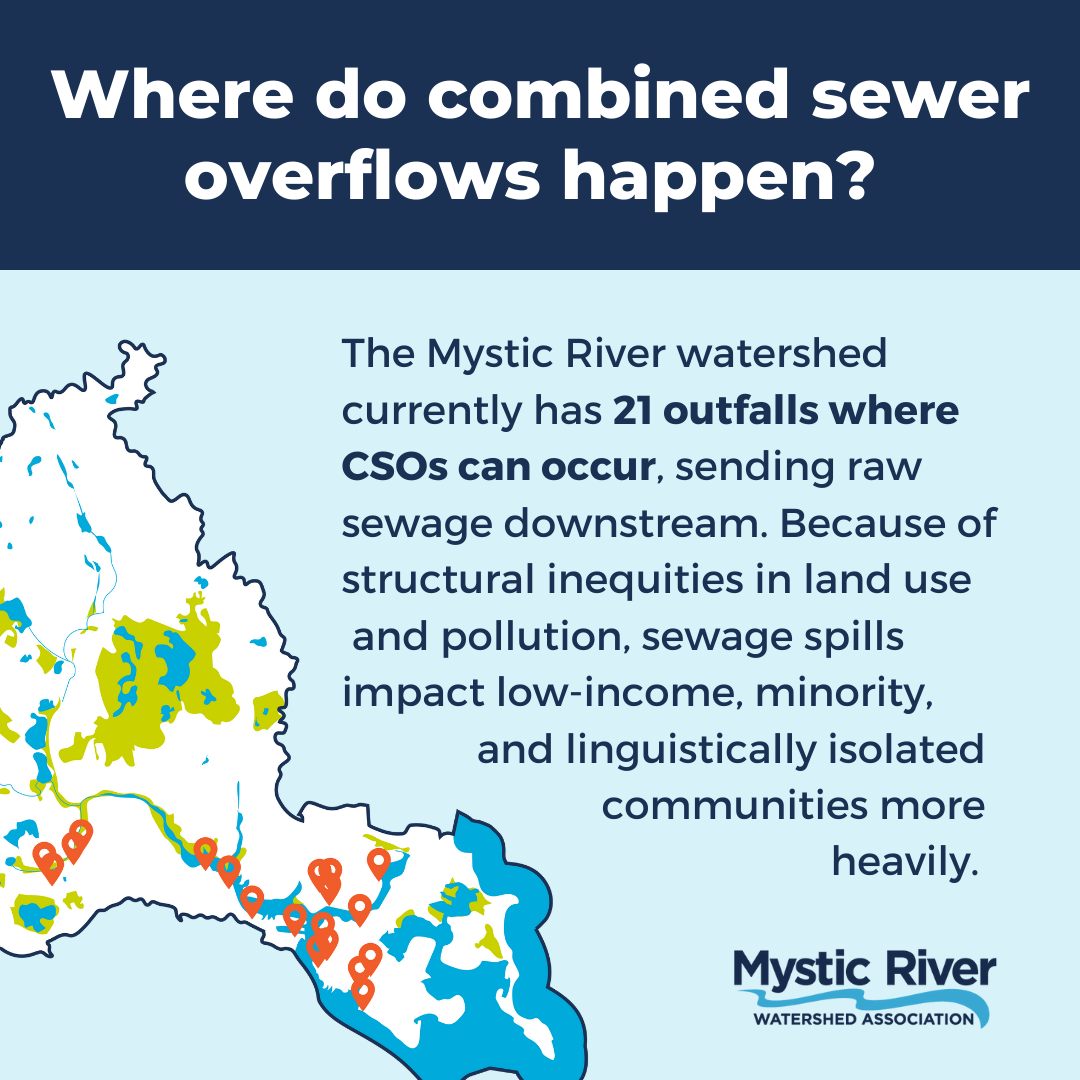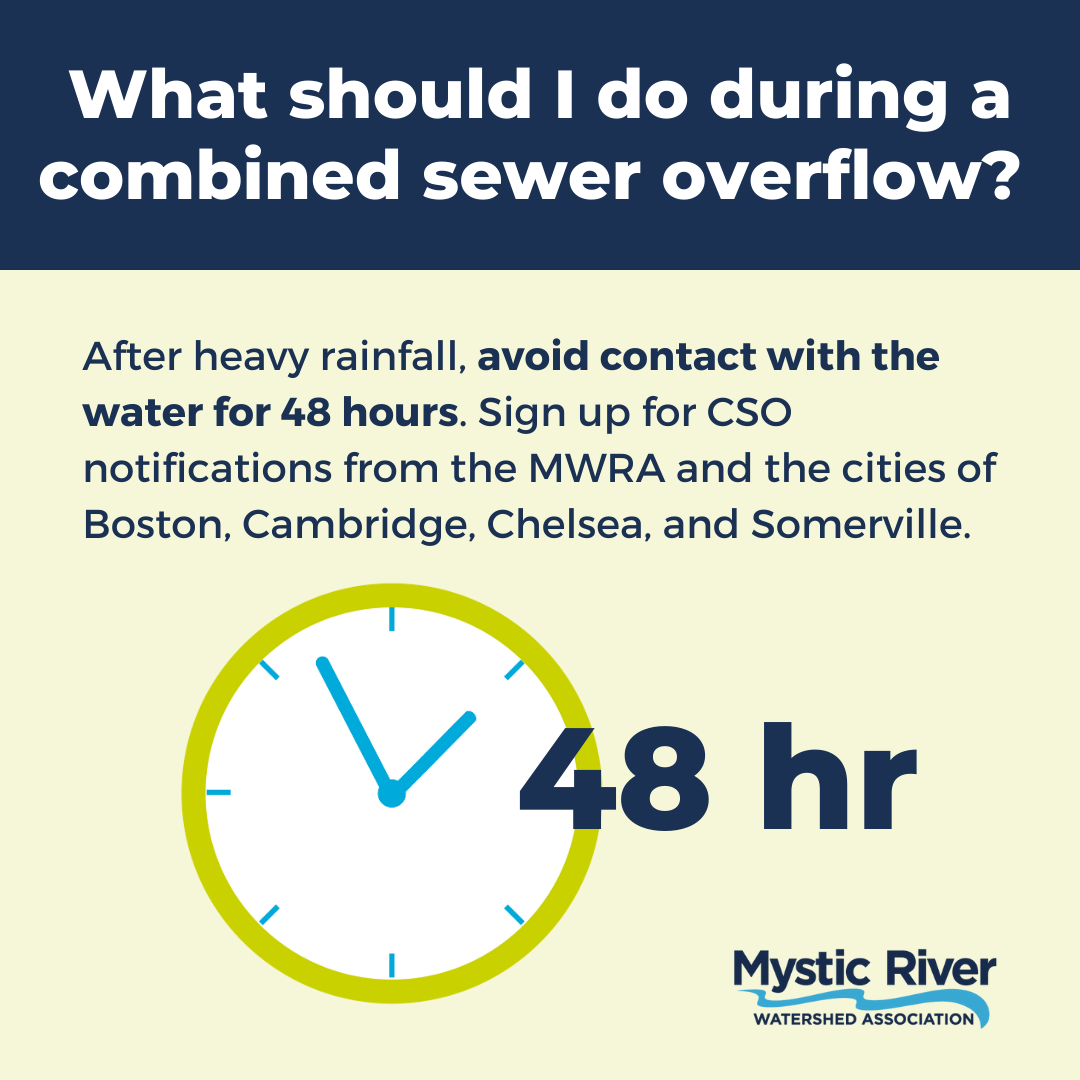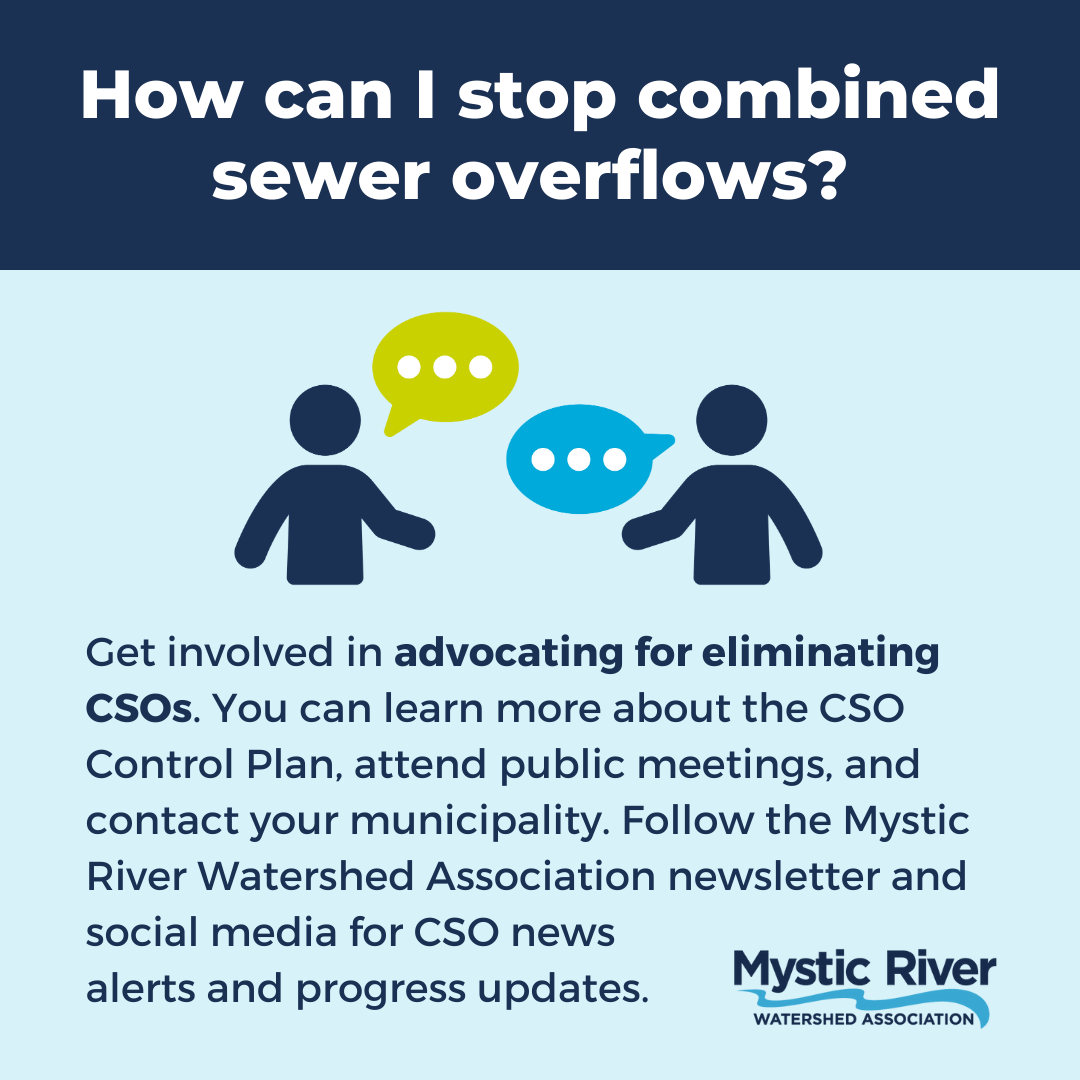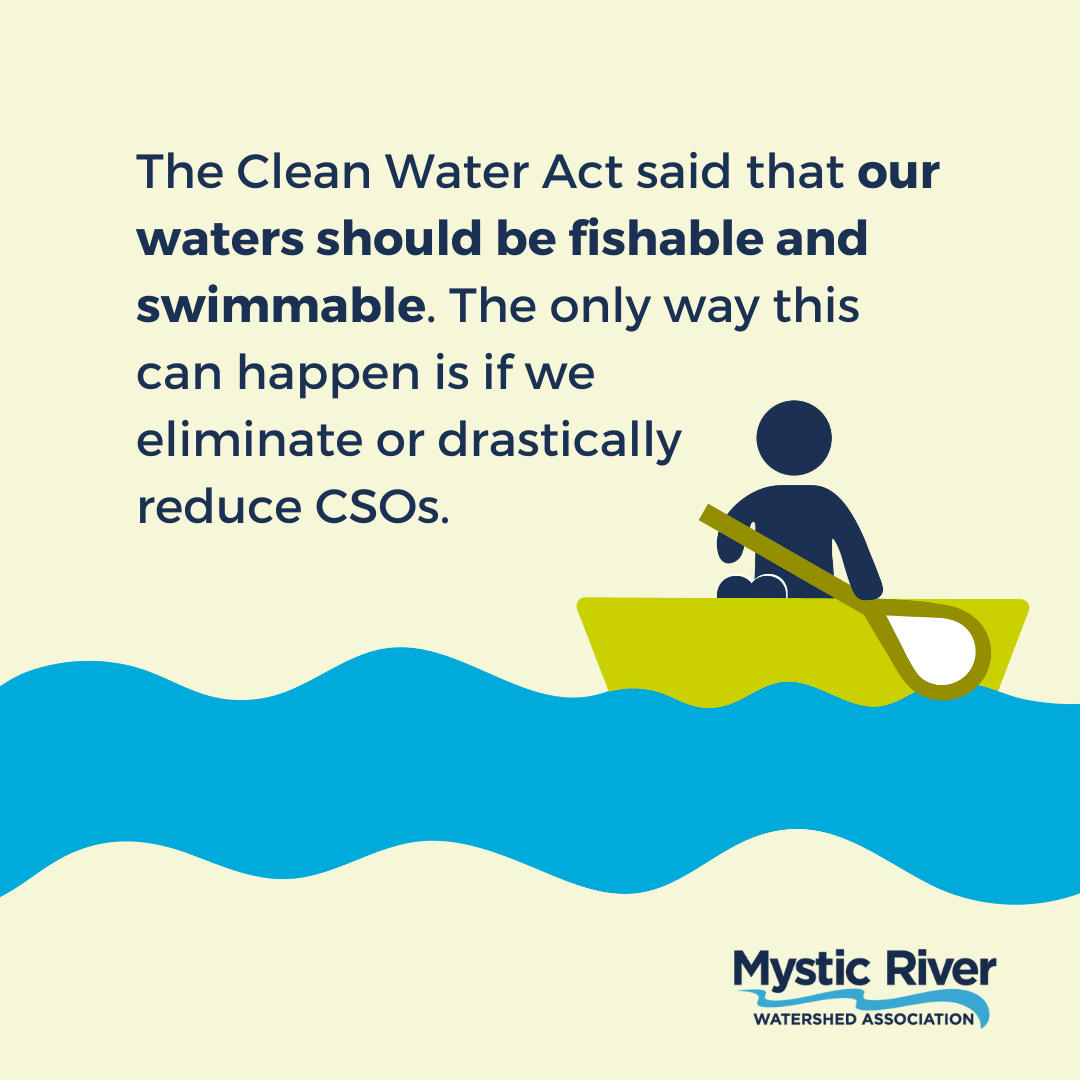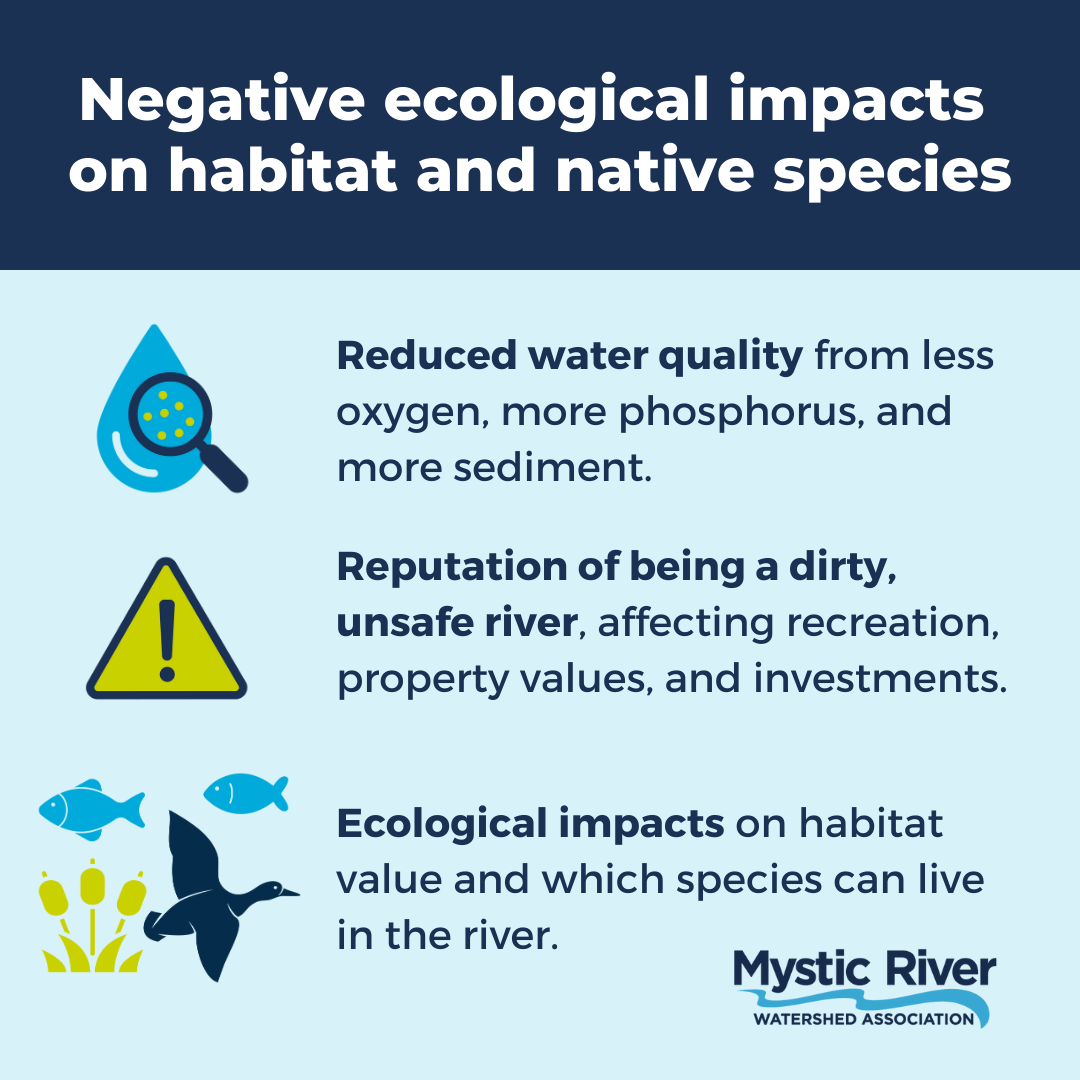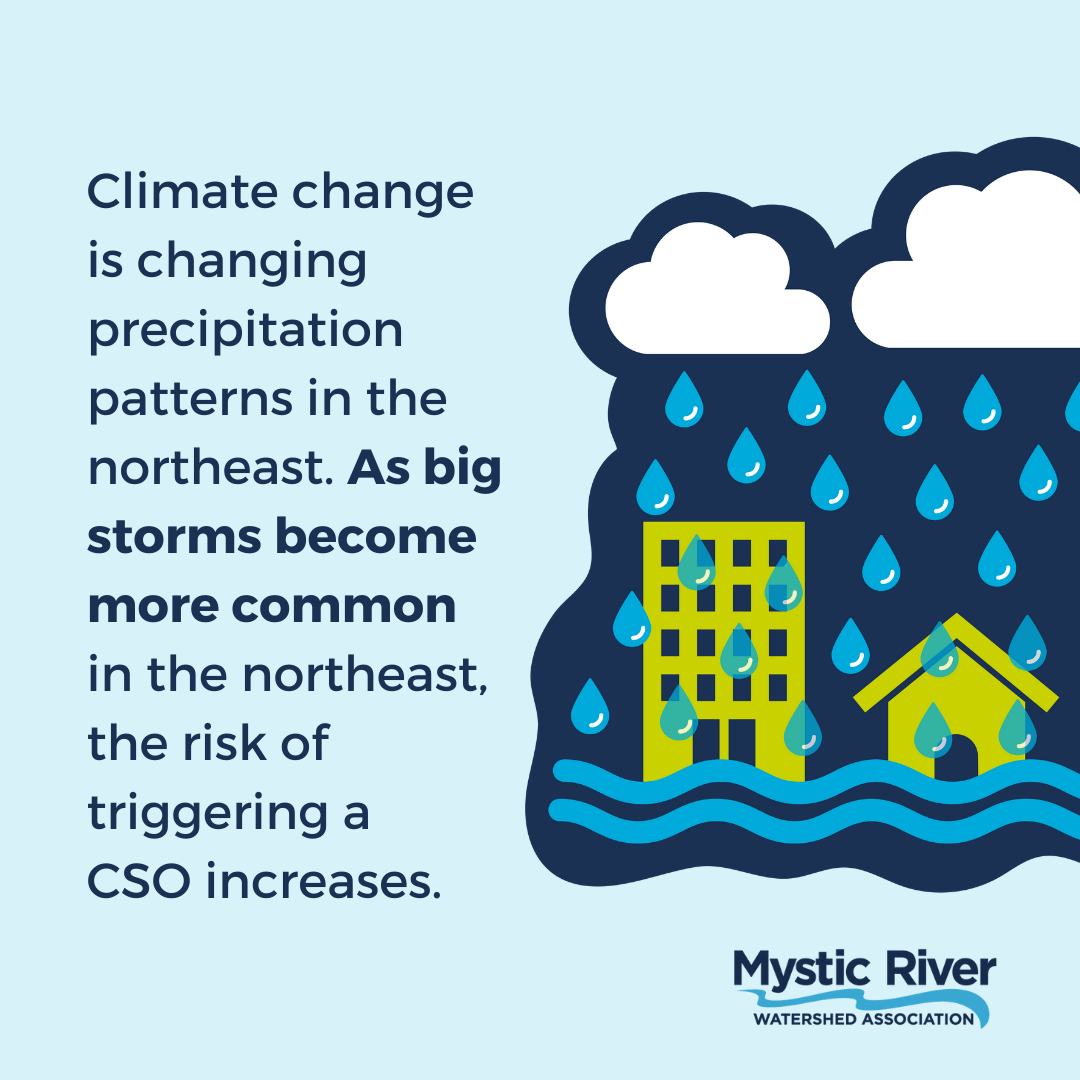COMBINED SEWER OVERFLOWS
WHAT IS A COMBINED SEWER OVERFLOW (CSO)?
CSOs are intentional outflows of sewage and rainwater discharged into rivers and streams during very wet weather. They are the result of mid-19th century water infrastructure that is built with a connected sewer and storm drain system. During dry weather, this system works just fine, sending wastewater down the pipe and off to a treatment facility where waste and pollutants are removed. During very wet weather, though, especially when a lot of water falls in a very short period of time, the amount of water coming through the system is more than the pipes can handle, so they are designed to overflow rather than back up into people’s homes, sending both the stormwater and the sewage into rivers and streams. These events are called Combined Sewer Overflows, and they pose a risk to the health of both the people and the ecosystem downstream.
CSOs in wet and dry weather
CSOs AND THE MYSTIC RIVER WATERSHED
CSO's are a major pollution concern for the Mystic River Watershed and are a barrier to fishable and swimmable rivers as pledged in the Clean Water Act. CSO's contain not only stormwater but also untreated human and industrial waste, toxic materials, and debris. Pollutants associated with such overflows pose a risk to public health, impact water uses (swimming, boating, and fishing), and stress the aquatic environment.
CSOs also have an outsized impact on environmental justice communities. Due to CSOs and other pollutants, public health officials recommend avoiding contact with water bodies during rainstorms and for 48 hours afterward.
Where does this happen?
Currently, there 21 outfalls along the Alewife Brook, Mystic River and Chelsea River. Annual discharges from CSOs— although much reduced— are still measured in the millions of gallons—which is dangerous to people, habitat, and wildlife. Because of structural inequities in land use and pollution, sewage spills impact low-income, minority, and linguistically isolated communities more heavily. The map shows currently active CSOs (red) and ones that have been eliminated (gray).
WHAT IS BEING DONE?
CSOs must be fully eliminated in order to ensure the health of our communities and ecosystems. The ultimate solution is to fully separate stormwater and sanitary sewer pipes and close the CSOs that remain throughout Greater Boston. This will be an expensive process that involves a collaborative effort between cities and public pressure to address the problem.
Thankfully, the Massachusetts Water Resources Authority (MWRA) and the cities of Somerville and Cambridge are already engaged in a process of controlling CSOs in the Mystic and Charles River watersheds. Over the past four decades, many CSOs have been closed and more CSOs are being partially treated before they are released into our waterways.
Still, CSOs remain a pressing issue for all of us who live, work, and recreate near our rivers and streams.
CSO ALERTS
Thanks to the CSO bill H.4921, waste treatment operators are required to notify the public when there’s been a sewage discharge in their area. You can sign up for alerts to be informed of CSOs when they occur near you.
Thanks to public reporting on CSOs, MyRWA is able to track CSOs in the Mystic River watershed and better understand the threat they pose.
How can you help?
Add Your Voice to the CSO Conversation
Subscribe to the MyRWA e-news to receive updates about CSOs in the Mystic and to stay in the loop about opportunities for public involvement in the CSO Long-Term Control Plan.
Contact your legislators to let them know that you care about CSOs and want to see investment in the improvement of stormwater infrastructure. Find your legislator here.
When the opportunity arises, vote yes on increased stormwater funding in your municipality. Better stormwater infrastructure can reduce the flow of rainwater through combined systems and help mitigate CSOs.
More Information
Resources
WHAT IS A SANITARY SEWER OVERFLOW?
Sanitary Sewer Overflows - or SSOs - are illegal discharges or raw sewage that are often set off during heavy rains because of stormwater infiltrating and overloading the sewage system.
Sanitary sewer overflows (SSOs) are discharges of raw sewage into surrounding water sources and communities and can be caused by severe weather, improper maintenance, and vandalism. The EPA estimates that there are at least 40,000 SSOs each year across the US. Recurring SSO sites exist throughout the Mystic River Watershed, and usually occur during heavy rains because of stormwater infiltrating and overloading the sewage system. Although these overflows are illegal, they continue to occur.
HEALTH ISSUES
Sanitary sewer overflows pose a serious health risk. SSOs contaminate the surrounding environment and threaten anyone who comes in contact with the runoff. They degrade the quality of water sources and can cause flooding into homes, basements, and low-lying areas. Raw sewage can carry bacteria, viruses, protozoa, intestinal worms, and fungi. Contact with these contaminants can lead to diseases ranging from mild gastroenteritis (the stomach flu) to severe water-borne illnesses such as cholera and dysentery. Community members may come in contact with contaminated water through direct contact in residential areas, water-related activities such as canoeing or swimming, or through drinking water. For your safety MyRWA suggests avoiding contact with river water after large storm events.
SSO ALERTS
The MWRA provides alerts to SSOs in addition to CSOs. Sign up for alerts here.


